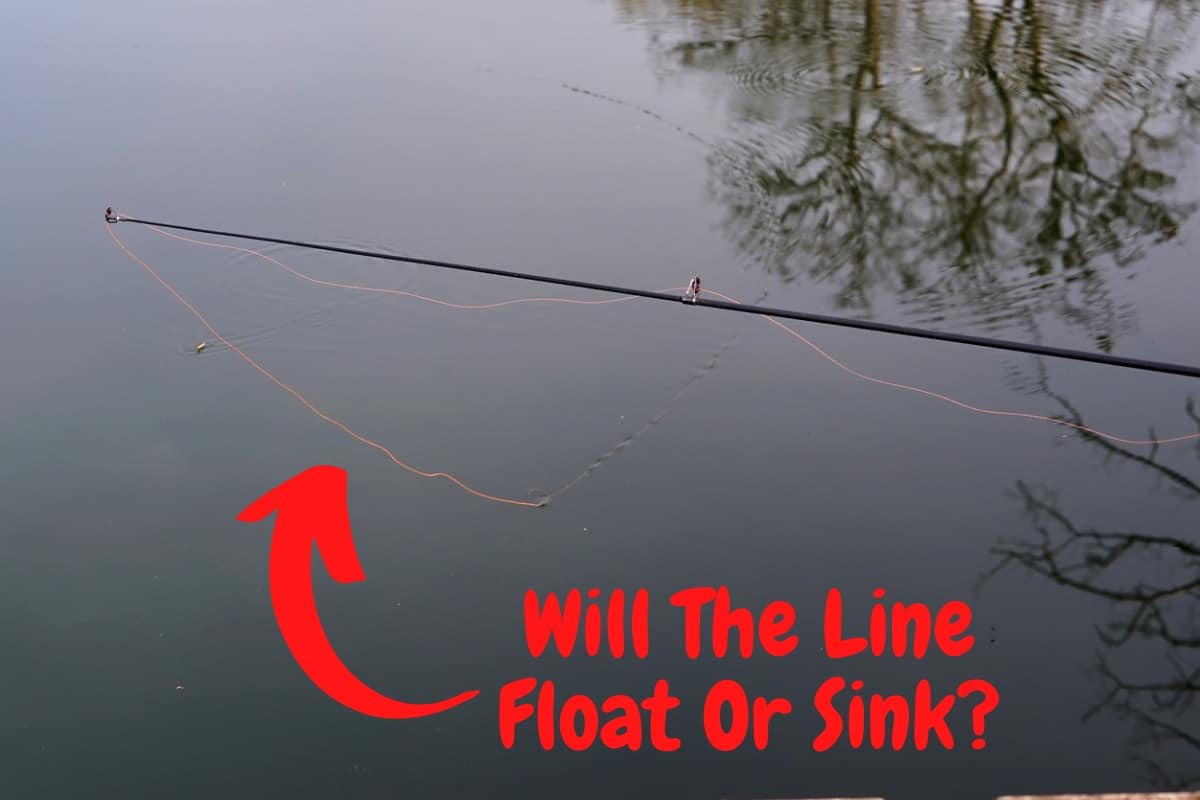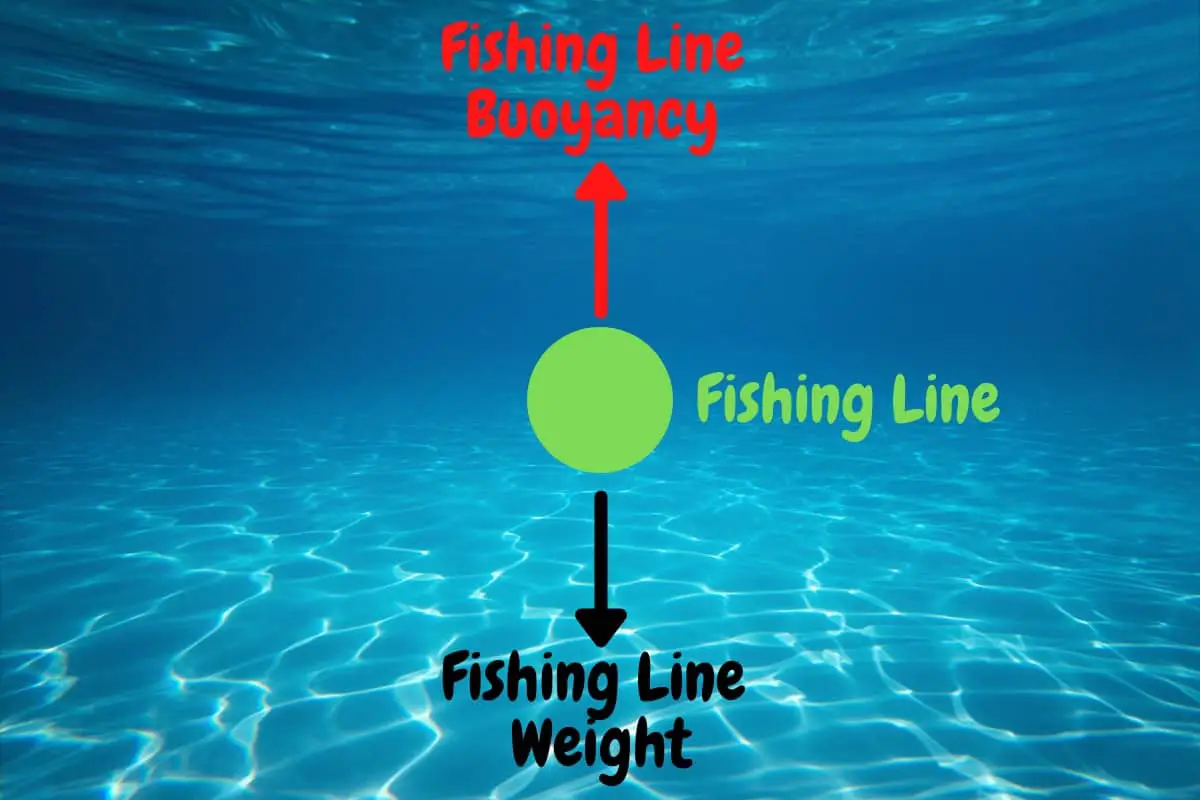
Not every fishing line is built equally, and as a result, some fishing lines tend to float or sink. As anglers, it’s important to understand which fishing lines can float or sink because it could affect your line’s sensitivity, bait’s action, and your bait’s presentations.
In general, both monofilament and fluorocarbon fishing lines will sink, and braided fishing lines will float. However, other factors such as the line’s protective coating and the salt content of the water could change whether the fishing line floats or sinks.
There is a lot to understand WHY some fishing lines float or sink. In this post, I will pull back the curtains behind the science on what causes a fishing line to float or sink.
The Science Behind How Fishing Line Floats or Sinks?
To fully understand what causes a fishing line to float or sink, we need to take a step back for a moment to understand some basic physics.
What is Buoyancy?
What determines if a fishing line will float or sink is call Buoyancy. The higher the buoyancy, the more an object will tend to float. The lower the buoyancy, the more an object will tend to sink.
Buoyancy is an upward force exerted on an object by the surrounding fluid. The amount of upward force created depends on the object’s partially or fully submerged volume. An object will float when the upward force is greater than its weight. An object will sink when its weight is greater than the upward force.
Cool Fact:
Large ships like cruise ships or freight ships are designed using this fundamental buoyancy principle, allowing ships to float while being made out of steel.

Major Factors That Contributes To A Fishing Line’s Buoyancy
The buoyancy of a fishing line primarily depends on its and the water’s density.
If the fishing line has a higher density than water, then the fishing line will sink. Also, the reverse is true. If the fishing line has a lower density than water, then the fishing line will float.
The larger the density difference between your fishing line and water will neither increase how hard the water pushes up against the fishing line or how fast the fishing line can sink.
The density of water can change depending on its salt content, but as a general rule, the average density of water is considered as:
- Freshwater: 0.036 lb/in^3 (1 g/cm^3)
- Saltwater: 0.037 lb/in^3 (1.25 g/cm^3)
Cool Fact:
The density of the Dead Sea is 0.045 lb/in^3 (1.24 g/cm^3), which is 21% denser than saltwater and is considered so dense that you will naturally float on the water instead of sinking.
Does Monofilament Fishing Line Sink or Float?
A monofilament fishing line is a common fishing line used by many anglers. But there seems to be some confusion about whether a monofilament fishing line will float or sink in water.
The average density of a monofilament fishing line is 0.0415 lb/in^3 (1.15 g/cm^3), which is 15% heavier than fresh water and 12% heavier than saltwater. Therefore, a monofilament fishing line will sink in freshwater and saltwater because the fishing line’s density is heavier than water.
What Is The Rate Of Sinking For Monofilament Fishing Line?
Since we have determined that a monofilament fishing line will sink, another popular question that anglers wonder about is how fast a monofilament line will sink?
I’ve wondered about this too. So I put my engineering hat on, brought out the calculator, and calculated the time it will take for a monofilament fishing line to sink 10 yards in depth.
| Line Test | Average Monofilament Line Diameter | Freshwater | Saltwater |
| 4 lb | 0.0079 in 0.203mm | 17 seconds | 18 seconds |
| 6 lb | 0.010 in 0.254 mm | 16 seconds | 16 seconds |
| 8 lb | 0.0110 in 0.279 mm | 15 seconds | 15 seconds |
| 10 lb | 0.0120 in 0.305 mm | 14 seconds | 14 seconds |
| 12 lb | 0.0140 in 0.356 mm | 13 seconds | 13 seconds |
| 14 lb | 0.0150 in 0.381 mm | 13 seconds | 13 seconds |
| 17 lb | 0.0158 in 0.401 mm | 12 seconds | 13 seconds |
| 20 lb | 0.0180 in 0.457 mm | 12 seconds | 12 seconds |
| 25 lb | 0.0197 in 0.50 mm | 11 seconds | 11 seconds |
| 30 lb | 0.0216 in 0.550 mm | 11 seconds | 11 seconds |
| 40 lb | 0.0236 in 0.600 mm | 10 seconds | 10 seconds |
| 50 lb | 0.0276 in 0.700 mm | 9 seconds | 9 seconds |
| 60 lb | 0.0315 in 0.800 mm | 9 seconds | 9 seconds |
| 80 lb | 0.0354 in 0.900 mm | 8 seconds | 8 seconds |
| 100 lb | 0.0394 in 1.000 mm | 8 seconds | 8 seconds |
Does Fluorocarbon Fishing Line Sink or Float?
A fluorocarbon fishing line is typically used as a leader line by anglers for many reasons. One of these reasons is that fluorocarbon fishing lines sink in water, which can help with bait presentation.
The average density of a fluorocarbon fishing line is 0.063 lb/in^3 (1.78 g/cm^3), which is 78% heavier than fresh water and 74% heavier than saltwater. Therefore, a fluorocarbon fishing line will sink in freshwater and saltwater because the fishing line’s density is heavier than water.
What Is The Rate Of Sinking For Fluorocarbon Fishing Line?
Similar to the monofilament rate of sinking table, I calculated the estimated time it would take for a fluorocarbon fishing line to sink one yard.
| Line Test | Average Fluorocarbon Line Diameter | Freshwater | Saltwater |
| 4 lb | 0.0071 in 0.180 mm | 15 seconds | 15 seconds |
| 6 lb | 0.0087 in 0.220 mm | 13 seconds | 14 seconds |
| 8 lb | 0.0098 in 0.250 mm | 13 seconds | 13 seconds |
| 10 lb | 0.0110 in 0.280 mm | 12 seconds | 12 seconds |
| 12 lb | 0.0118 in 0.300 mm | 11 seconds | 12 seconds |
| 14 lb | 0.0130 in 0.330 mm | 11 seconds | 11 seconds |
| 17 lb | 0.0150 in 0.380 mm | 10 seconds | 10 seconds |
| 20 lb | 0.0161 in 0.410 mm | 10 seconds | 10 seconds |
| 25 lb | 0.0189 in 0.480 mm | 9 seconds | 9 seconds |
| 30 lb | 0.0197 in 0.500 mm | 9 seconds | 9 seconds |
| 40 lb | 0.0236 in 0.600 mm | 8 seconds | 8 seconds |
| 50 lb | 0.0268 in 0.680 mm | 8 seconds | 8 seconds |
| 60 lb | 0.0303 in 0.770 mm | 7 seconds | 7 seconds |
| 80 lb | 0.0362 in 0.920 mm | 7 seconds | 7 seconds |
| 100 lb | 0.0401 in 1.020 mm | 6 seconds | 6 seconds |
Does Braided Fishing Line Sink or Float?
A braided fishing line is used a lot for topwater fishing because of its superior casting, increased sensitivity, and ability to float on water.
The average density of a braided fishing line is 0.035 lb/in^3 (0.97 g/cm^3), which is 3% lighter than fresh water and 5% lighter than saltwater. Therefore, a braided fishing line will float in freshwater and saltwater because its density is lighter than water.
What Does This All Mean for you …
We covered a lot of information here but hopefully you found this post useful.
Monofilament and Fluorocarbon fishing lines have higher densities than water which will cause them to sink. Braided fishing lines have a lower density than water which will cause them to float.
A fishing line’s sinking rate measures how fast a fishing line will sink. The sinking rate is dependent on the line and water density, and line diameter. The sinking rate tables estimate how long it will take for a fishing line to sink one yard. Use this table as a guideline to help you figure out how long it will take for your bait to sink to the proper depth that you need.
Happy Fishing and Tight Lines
